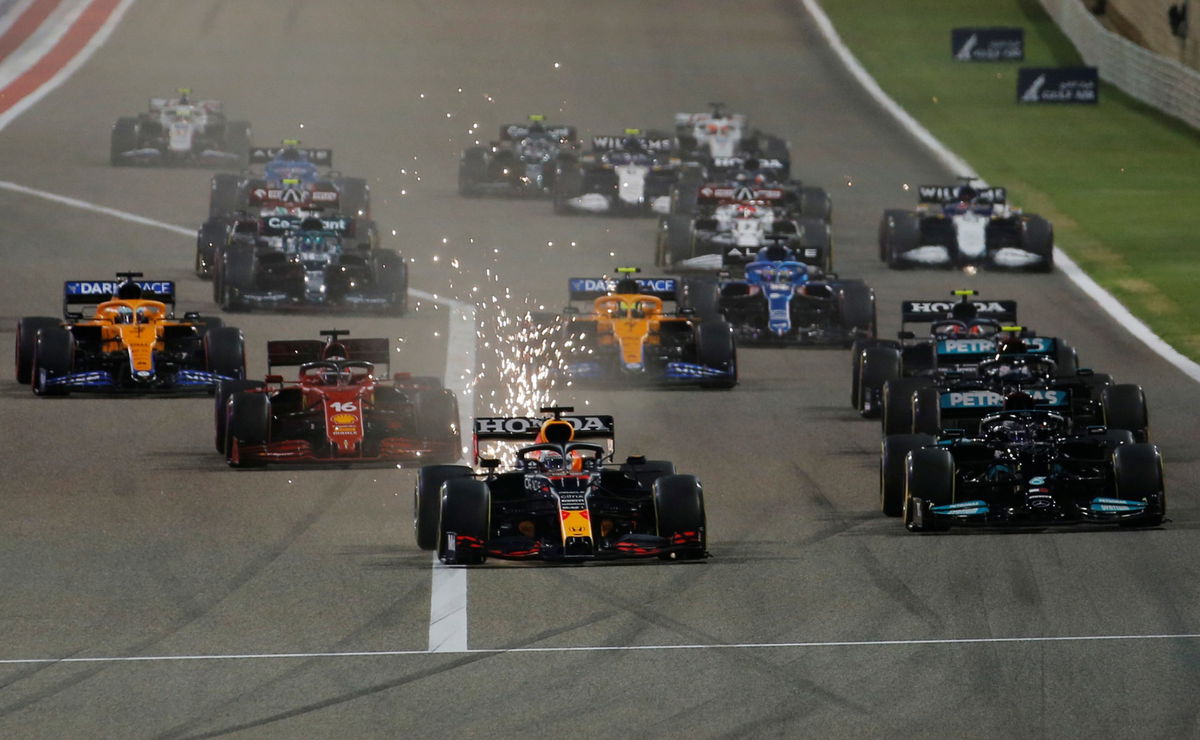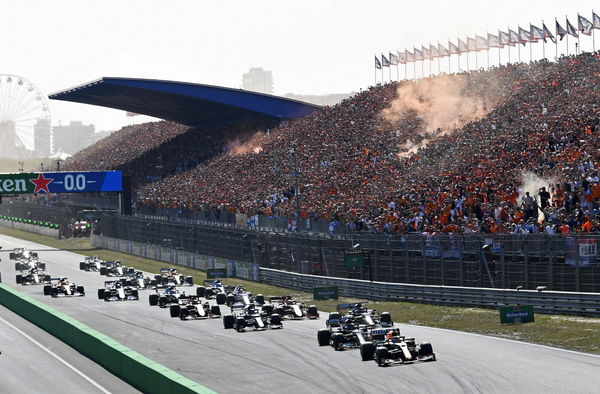
Reuters
Formula One F1 – Bahrain Grand Prix – Bahrain International Circuit, Sakhir, Bahrain – Red Bull’s Max Verstappen leads at the start of the race REUTERS/Hamad I Mohammed TPX IMAGES OF THE DAY

Reuters
Formula One F1 – Bahrain Grand Prix – Bahrain International Circuit, Sakhir, Bahrain – Red Bull’s Max Verstappen leads at the start of the race REUTERS/Hamad I Mohammed TPX IMAGES OF THE DAY
The much-awaited countdown has begun for the commencement of the 2022 Formula One season. Ever since 2019, there has been a substantial hype around this particular F1 season amidst the game-changing regulatory tweaks that are quite likely to bunch up the entire grid.
Watch What’s Trending Now!
The roller coaster ride will start on March 18 in Bahrain and what follows will be a highly enthralling journey around the world before the curtain falls over the campaign in Abu Dhabi later on November 20, 2022. The first half of the season, as expected, looks less chaotic with zero triple-header weekends and five double-headers.
ADVERTISEMENT
Yet another chaotic second-half to an F1 season
The season kicks off with a double-header in Bahrain and Saudi Arabia followed by four back-to-back double-headers starting from race weekend 06 in Barcelona until race weekend 13 in Hungary. However, then arrive the headache for the teams and drivers.
Following the month-long summer break, the season’s second half begins with a triple-header in Belgium, Zandvoort, and Italy. Only a couple of weeks later, another triple-header is scheduled in Russia, Singapore, and Japan.

Reuters
Formula One F1 – Dutch Grand Prix – Circuit Zandvoort, Zandvoort, Netherlands – September 5, 2021 General view at the start of the race REUTERS/Piroschka Van De Wouw
Finally, the season ends with a couple of double-headers in Austin and Mexico, and Brazil and Abu Dhabi, respectively. Hence, with 23 races estimated to take place, the upcoming campaign will be the longest F1 race calendar in the history of the sport.
ADVERTISEMENT
F1 did attempt to break this record last year, but citing the pandemic and consequent withdrawal of multiple countries from hosting races, F1 had to settle for record-equaling 22 races.
ADVERTISEMENT
Watch Story: From Drunk Gala to Dry Responses: Kimi Raikkonen’s Funniest Moments
2022 Formula One race calendar
- Bahrain Grand Prix – Sakhir (March 08 – March 10)
- Saudi Arabian Grand Prix – Jeddah (March 25 – March 27)
- Australian Grand Prix – Melbourne (April 08 – April 10)
- Emilia Romagna Grand Prix – Imola (April 22 – April 24)
- Miami Grand Prix – Miami (May 06 – May 08)
- Spanish Grand Prix – Barcelona (May 20 – May 22)
- Monaco Grand Prix – Monaco (May 27 – May 29)
- Azerbaijan Grand Prix – Baku (June 10 – June 12)
- Canadian Grand Prix – Montreal (June 17 – June 19)
- British Grand Prix – Silverstone (July 01 – July 03)
- Austrian Grand Prix – Spielberg (July 08 – July 10)
- French Grand Prix – Le Castellet (July 22 – July 24)
- Hungarian Grand Prix – Budapest (July 29 – July 31)
- Belgian Grand Prix – Spa-Francorchamps (August 26 – August 28)
- Dutch Grand Prix – Zandvoort (September 02- September 04)
- Italian Grand Prix – Monza (September 09 – September 11)
- Russian Grand Prix – Sochi (September 23 – September 25)
- Singapore Grand Prix – Singapore (September 30 – October 02)
- Japanese Grand Prix – Suzuka (October 07 – October 09)
- United States Grand Prix – Austin (October 21 – October 23)
- Mexico City Grand Prix – Mexico City (October 28 – October 30)
- Brazilian Grand Prix – Sao Paulo (November 11 – November 13)
- Abu Dhabi Grand Prix – Abu Dhabi (November 18 – November 20)
ADVERTISEMENT
Note: Emilia Romagna, Spain, Singapore, and USA are subject to contract. Miami GP is subject to circuit approval from F1 and the FIA.
Read More: Why do F1 Drivers Train Their Necks?
ADVERTISEMENT
ADVERTISEMENT
ADVERTISEMENT

